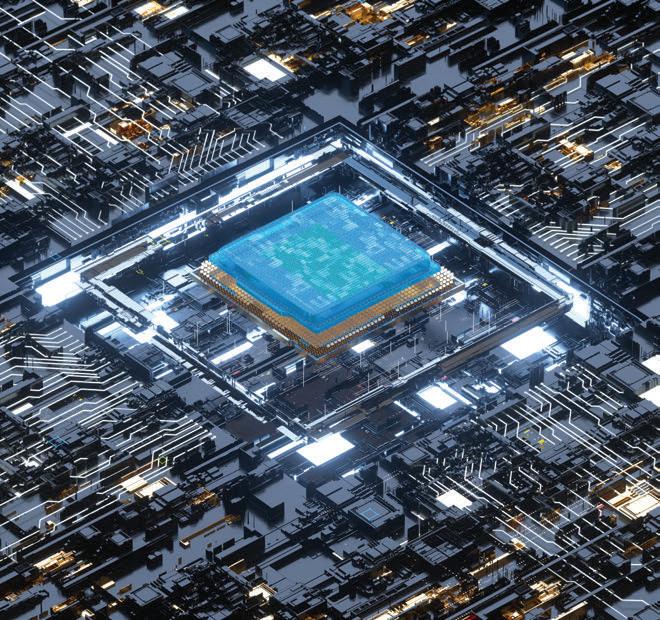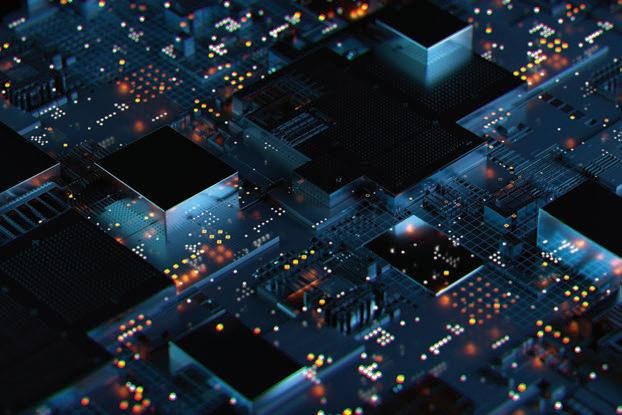
4 minute read
Is Your Process Control Software Up to Date?
Process control software advances—ranging from distributed control systems to multivariate control—offer a number of important capabilities to process manufacturers. The difficult part can be determining what technologies will benefit your operations most.
Process control software and related devices are some of the longest-used industrial devices in existence. When you hear references to 30- and 40-year-old automation systems, chances are they’re installed in a continuous process facility. And while there are numerous reasons for this, the fact is that technology is no longer advancing incrementally—which more easily allows older systems to stay in place. Today’s technology is leapfrogging itself in capabilities compared to previous levels of advancement.
That’s why, even if you’re not currently in the market for new process control software, you should keep up to date with how these technologies are changing. Because that decadesold technology you’re using now will not last forever. The goal is not just to replace old with new, but to replace the old with what you really need.
RECENT ADVANCES Third-generation distributed control systems (DCSs) all share a commonality with regard to configuration. They use Windowsbased, object-oriented software for building I/O, configuring complex control strategies, and programming calculated variables. Importing and exporting databases is simplified by using spreadsheet software and similar productivity tools. humanmachine interface (HMI) display building is similarly designed to use the best features of Windows, with menu drop-downs, standardized display objects, and copy-and-paste tools.
The result is a reduction in engineering effort, training costs, and on-site time required to migrate first- and second-generation DCSs—or to configure control databases for grass-roots installations. In short, an engineer can now use a PC to configure the control system, versus having to interface with the DCS via a dedicated, proprietary console tucked away inside a control room.
Another important advance is the improved ability to integrate DCSs with the office network and make real-time and historical data available to anyone in the organization. New DCSs provide the tools to turn this data into useful information, leading to improvements in site productivity. While this
was possible before, it required additional network capacity, special software, and a lot of engineering. It’s becoming much easier and efficient to get that information into the business network and start using it productively.
WHERE APC IS NEEDED Advanced process control (APC) has two main objectives: 1) mitigate the negative impact of operating instability due to measured and un-measured disturbance variables; and 2) when possible, move the plant toward more profitable operation, while honoring process constraints.
Considering the above objectives, the process conditions that indicate the need for APC include: • Frequent feed charge rate and composition changes; • Process complexity (e.g., an olefins plant); • A high degree of unit heat integration; • Frequent changes in key operating objectives (e.g., product quality targets); • Economic and market conditions that call for maximizing plant production rates; and • Continuous processes that require a lot of operator interaction.
ADAPTIVE OR PREDICTIVE CONTROL Predictive control uses dynamic models to predict the future state of the process and then make moves so that unit operation remains at stable and profitable conditions. These models must be developed ahead of time using historical plant data and often need adjusting as process conditions change (e.g., fouling of exchangers).
Adaptive control adjusts gains and time constants based on recent operating history. Adaptive control can be combined with dynamic, model-based APC, or more heuristics-based APC techniques, such as feedforward control, advanced supervisory control, and advanced regulatory control. DO I NEED A MULTIVARIABLE CONTROLLER? The presence of most, if not all, of the process conditions that indicate the need for APC discussed above would also suggest the need for multivariable control. But, beyond determining the need for multivariable control, the user must also evaluate the strength of the user’s organization to successfully implement the software. This is because use of multivariable control to successfully solve complex operating problems requires: • A sta of control engineers well-trained in implementing the multivariable control software and a deep understanding of the operating units where the software is applied; • Long-term and constant commitment of management to facility-wide use of the software—this means maintaining the control engineering sta and insisting on the involvement of the operations department in all aspects of the software’s use; • Daily monitoring of the availability and eectiveness of the multivariable controllers implemented with the software, and subsequent adjustments to controller parameters that impact the proper functioning of the controllers; and • A long-term maintenance program to ensure high controller availability and eectiveness.
Because of these necessary investments, it’s important to consider whether the control problem is truly multivariable with multiple inputs and outputs needed to control the objective. Otherwise, simpler solutions are often more eective in the long run.
You should only consider implementing multivariable control when the control problem is truly multivariable and when the above requirements are met, regardless of the presence of process conditions that may suggest its use.






